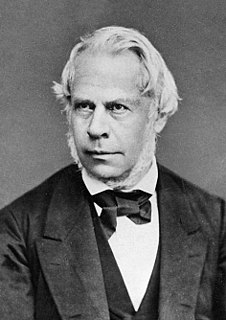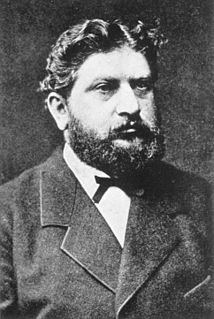

Otto Lubarsch (4 January 1860 – 1 April 1933) was a German pathologist and academic who was a native of Berlin. Among other contributions to medical knowledge, Lubarsch provided the first detailed description of carcinoid tumors.


Otto Lubarsch (4 January 1860 – 1 April 1933) was a German pathologist and academic who was a native of Berlin. Among other contributions to medical knowledge, Lubarsch provided the first detailed description of carcinoid tumors.
He originally studied philosophy and natural sciences in Leipzig and Heidelberg, and later on, earned his medical degree at the University of Strasbourg in 1883. Subsequently, he became an assistant to Hugo Kronecker at the Institute of Physiology in Bern, and afterwards served as an assistant at pathological institutes in Giessen, Breslau and Zurich. In 1891 he became first assistant to Albert Thierfelder at the pathological institute of the University of Rostock, where in 1894 he was appointed an associate professor of pathological anatomy and general pathology. In 1905 he became director of the institute of pathology and bacteriology at Zwickau, later serving as a professor in Düsseldorf (from 1907), Kiel (from 1913), and Berlin (1917–1929).
In 1888 Lubarsch provided the first detailed description of carcinoid tumors during autopsies of two male "patients", [1] however it wouldn't be until 1907 that the term karzinoid was applied by Siegfried Oberndorfer. Lubarsch also discovered tiny crystals in the epithelial cells of the testis that resemble sperm crystals. These structures are now known as "Lubarsch' crystals".
With Friedrich Henke (1868–1943), he was editor of the Henke-Lubarsch Handbuch der Speziellen Pathologischen Anatomie und Histologie, which was a massive reference book containing information germane to pathology. It was founded in 1924, and produced over a forty-year span. After World War II, it was continued and edited by Robert Rössle. With veterinarian Robert von Ostertag, he collaborated on the journal Ergebnisse der allgemeinen Pathologie und pathologischen Anatomie der Menschen und der Tiere.

Friedrich Gustav Jakob Henle was a German physician, pathologist, and anatomist. He is credited with the discovery of the loop of Henle in the kidney. His essay, "On Miasma and Contagia," was an early argument for the germ theory of disease. He was an important figure in the development of modern medicine.

Paul Clemens von Baumgarten was a German pathologist.

Otto Kahler was an Austrian physician and pathologist born in Prague.

Julius Friedrich Cohnheim was a German-Jewish pathologist.

Carl Wedl was an Austrian pathologist who was a native of Vienna.

Karl Theodor Fahr was a German pathologist born in Pirmasens of the Rhineland-Palatinate.
Eugen Woldemar Bostroem was a Baltic German pathologist. He was born in Fellin, in the Livonian Governorate of the Russian Empire.

Robert Rössle was a German pathologist. He was born in Augsburg and died in Berlin.

Ludwig Pick was a German pathologist born in Landsberg an der Warthe.

Felix Victor Birch-Hirschfeld was a German pathologist who was a native of Kluvensieck bei Rendsburg.

Siegfried Oberndorfer was a German physician and pathologist.

Alfred Biesiadecki was a Polish pathologist born in Dukla.
David Paul von Hansemann was a German pathologist born in Eupen. He is remembered for his work in the field of oncology, in particular, his concept pertaining to anaplasia of cancer cells.
Ferdinand Albert Thierfelder was a German pathologist born in Meissen. He was the son of city physician Johann Gottlieb Thierfelder (1799–1867), and was a younger brother to internist Theodor Thierfelder (1824–1904).

Richard Paltauf was an Austrian pathologist and bacteriologist born in Judenburg, Styria.

Carl Benda was one of the first microbiologists to use a microscope in studying the internal structure of cells. In an 1898 experiment using crystal violet as a specific stain, Benda first became aware of the existence of hundreds of these tiny bodies in the cytoplasm of eukaryotic cells and assumed that they reinforced the cell structure. Because of their tendency to form long chains, he coined the name mitochondria. These bodies had first been noted in 1857 by the physiologist and pioneer of the light microscope, Albert von Kölliker, and were later termed "bioblasts" by Richard Altmann in 1886.

Max Askanazy was a German-Swiss pathologist.

Eugen Albrecht was a German pathologist. His research largely dealt with the physical-chemical status of cells under normal and pathological conditions.

Hans Schmaus was a German pathologist.

Ernst Ziegler was a Swiss pathologist.